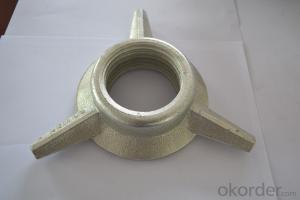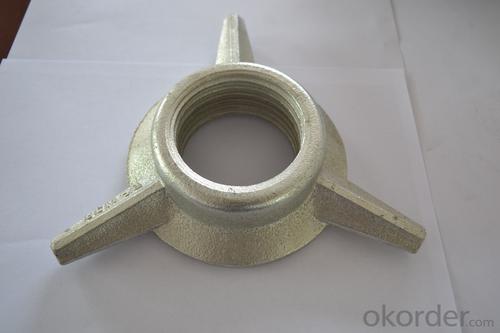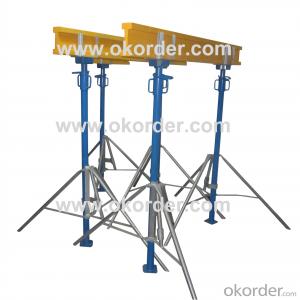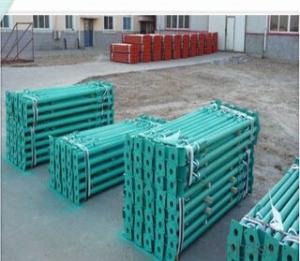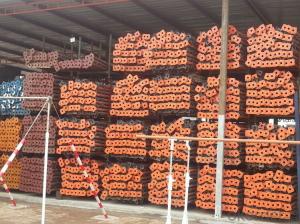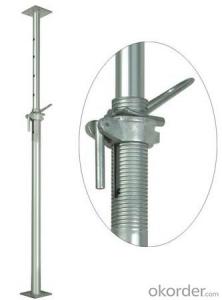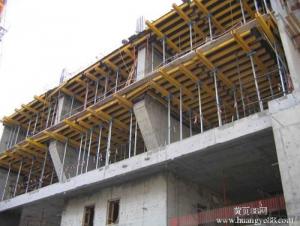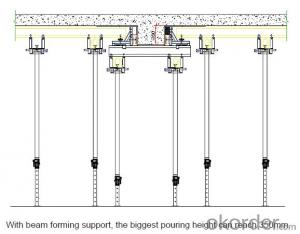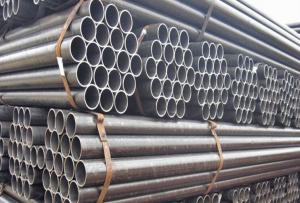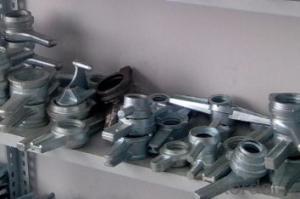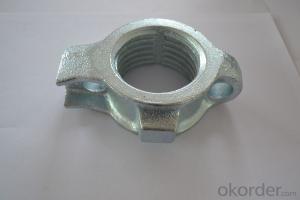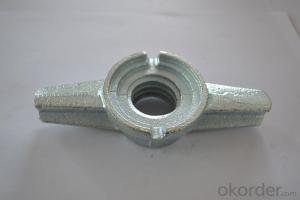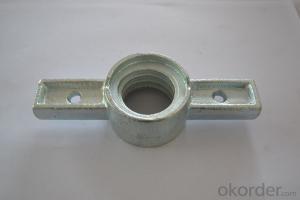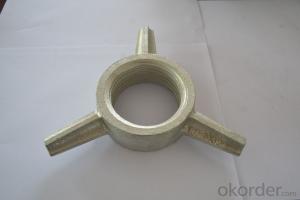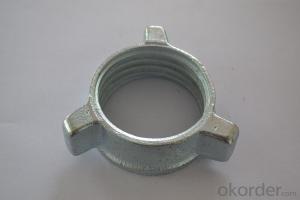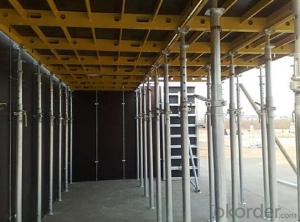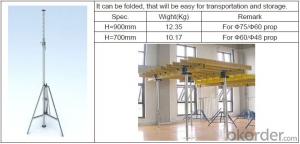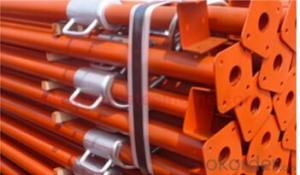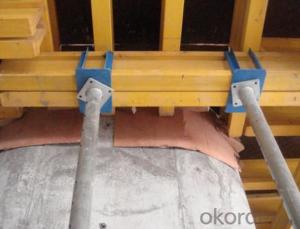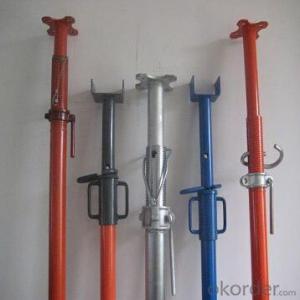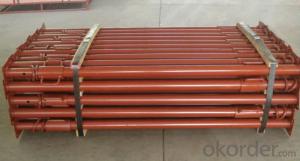OEM Two wing Butterfly Wing Nuts 10
- Loading Port:
- China Main Port
- Payment Terms:
- TT OR LC
- Min Order Qty:
- -
- Supply Capability:
- -
OKorder Service Pledge
OKorder Financial Service
You Might Also Like
Quick Details
| Model Number: | |||||
| Standard: | Type: | Certification: | |||
| Material: | Surface: |
Packaging & Delivery
| Packaging Detail: | Plastic bag, pallet packing, carton box, by customer's requirement |
| Delivery Detail: | within 30days after payment |
Specifications
Two wing Butterfly Wing Nuts
1>Excellent dimension accuracy
2>Finished: per your requirements
3>factory directly supply
Two wing Butterfly Wing Nuts
We supply kinds of metal parts totally according to clients' drawings and samples and special requirement.
1. Material: Ductile iron .
2. Sizes: Inner hole Dia 15/17mm.
We have different sizes ,types of wing nut to meet your needs, save your cost .
3. Weight: 0.35kg,thread pitch: 10.0mm.(or 6.35mm)
4. Surface: White Zinic , Yellow Zinic or painted, self color
5 Thread:casted or machine tap.
1. 12000M2 standard modern workshop guarantee production capability to satisfy the customers needs
2. Our Independent quality control department,Which make sure the quality of all products
3. Our efficient and experienced sales team ,provide friendly and thoughtful service for clients from all over the world
- Q: What are the advantages of using telescopic steel props?
- There are several advantages to using telescopic steel props in construction projects. Firstly, telescopic steel props offer excellent load-bearing capacity. They are specifically designed to provide strong support to vertical loads, making them ideal for supporting heavy structures, such as beams and slabs. This ensures the safety and stability of the construction site, reducing the risk of accidents or structural failures. Secondly, telescopic steel props are adjustable in height. This feature allows for precise leveling and alignment of structures during construction. The ability to adjust the props to the desired height ensures that the construction process is efficient and accurate, saving time and effort for the workers. Furthermore, telescopic steel props are lightweight and easy to handle. This makes them highly portable and versatile, allowing construction workers to move and set up the props quickly and easily. The lightweight nature of these props also reduces the strain on workers' bodies, minimizing the risk of injuries and enhancing productivity on the construction site. In addition, telescopic steel props are durable and long-lasting. Made from high-quality steel, they are resistant to corrosion, weathering, and wear and tear. This means that they can withstand harsh environmental conditions and heavy use over time, reducing the need for frequent replacements or repairs. Lastly, telescopic steel props are cost-effective. Their durability and longevity, combined with their versatility and easy handling, make them a cost-effective solution for construction projects. By minimizing the need for additional support systems or equipment and reducing labor costs, these props can contribute to overall project savings. Overall, the advantages of using telescopic steel props in construction include their excellent load-bearing capacity, adjustable height, portability, durability, and cost-effectiveness. These props are an essential tool for ensuring safety, efficiency, and quality in construction projects.
- Q: What are the common safety features of steel props?
- Steel props, also referred to as adjustable steel props or acrow props, play a crucial role in construction and renovation projects by supporting temporary structures and promoting stability. These props incorporate various safety measures to safeguard workers and prevent accidents on the job site. 1. Height Adjustability: The design of steel props includes a telescopic mechanism, enabling effortless adjustment of the height. This functionality guarantees that the props can be set at the appropriate level to provide optimal support and stability. 2. Load-Bearing Capacity: Steel props are meticulously engineered to withstand heavy loads. They are typically manufactured using sturdy materials and undergo rigorous testing to ensure they meet specific load-bearing capacities. This ensures that the props can safely bear the weight of temporary structures or heavy construction materials. 3. Locking Mechanism: To prevent inadvertent collapse or height adjustment, steel props are furnished with secure locking pins. These pins effectively hold the prop at the desired height and prevent any unintentional changes. The locking mechanism adds an extra layer of safety by ensuring the prop remains stable throughout the construction process. 4. Prop Head Plate: Steel props feature a flat prop head plate at the top, providing a larger surface area for load distribution. This design aids in protecting the supported structure, minimizing the risk of the prop sinking into the ground or causing instability. 5. Anti-Slip Base Plate: The bottom of the steel prop is typically equipped with an anti-slip base plate. This characteristic enhances stability by preventing the prop from slipping or sliding on smooth or uneven surfaces. The anti-slip base plate guarantees that the prop remains securely in place, reducing the likelihood of accidents resulting from prop movement. 6. Powder Coating or Galvanization: Many steel props undergo either a powder coating process or galvanization to shield them from corrosion and rust. This protective coating enhances the durability and longevity of the props, ensuring their safe and reliable use over an extended period. In conclusion, steel props incorporate various safety features such as height adjustability, high load-bearing capacity, a locking mechanism, a prop head plate, an anti-slip base plate, and a protective coating. These features are purposefully designed to ensure the stability, reliability, and safety of steel props during construction and renovation projects.
- Q: Can steel props be used for supporting temporary power generation infrastructure?
- Indeed, temporary power generation infrastructure can benefit from the utilization of steel props. Typically employed in construction endeavors to offer temporary support to structures, these props can also be effectively employed to support temporary power generation infrastructure. With adjustable height and effortless installation and removal, steel props prove to be a suitable option for temporary applications. Additionally, steel props boast robust load-bearing capacity, stability, and durability, all of which are fundamental prerequisites for supporting heavy power generation equipment. Whether it involves supporting a generator or stabilizing temporary power poles, steel props possess the capability to provide the requisite support and stability required by temporary power generation infrastructure.
- Q: Can steel props be used to support walls during demolition?
- Steel props, which are also referred to as adjustable steel acrow props, are frequently utilized in construction and demolition endeavors for the purpose of temporarily bolstering walls, ceilings, and other structures. These props are specifically engineered to endure substantial loads, and they can be effortlessly adjusted to attain the preferred height and length, thereby bestowing stability and averting collapse throughout the demolition process. Notably, steel props are particularly advantageous when demolishing load-bearing walls, as they proficiently distribute weight and guarantee the well-being of surrounding structures. Furthermore, the installation and removal of steel props are uncomplicated, rendering them a versatile and cost-efficient solution for supporting walls during demolition.
- Q: What are the regulations and standards for using steel props?
- The regulations and standards for using steel props vary depending on the country or region in question. However, there are some general guidelines and standards that apply to the use of steel props in construction and temporary support systems. One widely recognized standard for steel props is the European Standard EN 1065. This standard provides specifications for adjustable steel props used in construction and covers aspects such as the materials used, load-bearing capacity, dimensions, and testing requirements for steel props. In addition to EN 1065, individual countries have their own regulations and standards for the use of steel props. These regulations typically cover important aspects like design, installation, and maintenance requirements to ensure the safety and stability of temporary support systems. Occupational health and safety regulations also play a crucial role in determining the regulations and standards for using steel props. These regulations aim to protect workers and ensure proper safety measures are in place when using steel props. They may include requirements for training, inspection, and the use of personal protective equipment. Construction professionals and contractors must familiarize themselves with the specific regulations and standards applicable in their respective countries or regions. This includes understanding load-bearing capacities, proper installation methods, inspection requirements, and any other guidelines set forth by the relevant authorities. By adhering to these regulations and standards, construction professionals can ensure the safe and efficient use of steel props in temporary support systems, thereby minimizing the risk of accidents and structural failures.
- Q: How do you ensure the stability of a steel prop?
- To ensure the stability of a steel prop, several measures can be taken. Firstly, it is important to choose a prop that is of appropriate size and strength for the intended load-bearing capacity. The prop should be securely positioned on a stable and level surface, such as a concrete base. Additionally, proper bracing and support should be provided to prevent any lateral movement or swaying. Regular inspections and maintenance should be conducted to identify and address any signs of wear or damage. Finally, adhering to relevant safety guidelines and regulations is crucial in ensuring the overall stability and reliability of the steel prop.
- Q: Are steel props resistant to corrosion and rust?
- Yes, steel props are generally resistant to corrosion and rust. Steel is an alloy composed primarily of iron and carbon, and it is known for its strength and durability. However, steel can still corrode and rust under certain conditions, such as exposure to moisture, chemicals, or extreme temperatures. To enhance the corrosion resistance of steel props, they are often treated with protective coatings or galvanized. These coatings act as a barrier, preventing water and oxygen from reaching the steel surface and causing corrosion. Regular maintenance and inspection are also important to ensure the continued resistance to corrosion and rust.
- Q: What are the main factors to consider when choosing the right steel props for a project?
- When choosing the right steel props for a project, there are several main factors to consider. Firstly, the load capacity of the props is crucial, as it should be able to support the weight of the structure or materials being propped. Additionally, the height and adjustability of the props should be considered to ensure they can be properly positioned and modified as needed. The material and construction quality of the props should also be evaluated for durability and safety. Lastly, it is important to consider the specific requirements of the project, such as the type of structure, environmental conditions, and any additional features or accessories needed.
- Q: How do you calculate the required spacing between steel props?
- To ensure the safe and efficient support of a structure, several factors must be considered when calculating the required spacing between steel props. The following are the key steps involved in this calculation: 1. Start by determining the load that the steel props need to support, which includes the weight of the structure, any additional live loads, and any concentrated loads that may be present. 2. Next, assess the load-bearing capacity of the steel props being used. This information can typically be obtained from the manufacturer's specifications or load tables. It is important to consider both the maximum axial load and the maximum moment capacity of the props. 3. Divide the total load by the number of props to determine the load that each individual prop needs to support. Ensure that the individual prop load does not exceed the load-bearing capacity of the props. 4. Determine any spacing limitations based on the specific requirements of the project or the manufacturer's guidelines. These may include maximum and minimum spacing requirements, influenced by factors such as the prop's length, stability, or bracing requirements. 5. Take into account the deflection of the steel props under load. Typically, a maximum allowable deflection limit is provided by the manufacturer. Ensure that the spacing is such that the deflection of each prop remains within this limit. 6. Divide the maximum allowable deflection by the deflection of each prop under load to determine the number of props needed to achieve the desired spacing. It is important to ensure that the resulting number of props is practical and feasible within the given project constraints. 7. Finally, consider any additional factors that may impact the spacing calculation, such as wind loads, seismic loads, or any other relevant design considerations. Adjustments to the spacing calculation may be necessary to ensure the stability and safety of the structure. During the calculation process, it is crucial to consult with a structural engineer or a qualified professional to ensure accuracy and adherence to safety standards and local building codes.
- Q: What is the maximum load capacity of a steel prop?
- The load capacity of a steel prop can differ depending on various factors like prop size, material quality, and design. Normally, steel props possess a strong load-bearing capacity and are intended to bear heavy loads in construction and temporary structures. Nevertheless, it is vital to refer to the manufacturer's specifications and guidelines to ascertain the precise maximum load capacity of a specific steel prop model. Such specifications are typically furnished by the manufacturer and are grounded on thorough testing and engineering computations. Adhering to these guidelines is crucial to guarantee the secure and dependable use of steel props in different applications.
Send your message to us
OEM Two wing Butterfly Wing Nuts 10
- Loading Port:
- China Main Port
- Payment Terms:
- TT OR LC
- Min Order Qty:
- -
- Supply Capability:
- -
OKorder Service Pledge
OKorder Financial Service
Similar products
Hot products
Hot Searches
Related keywords
